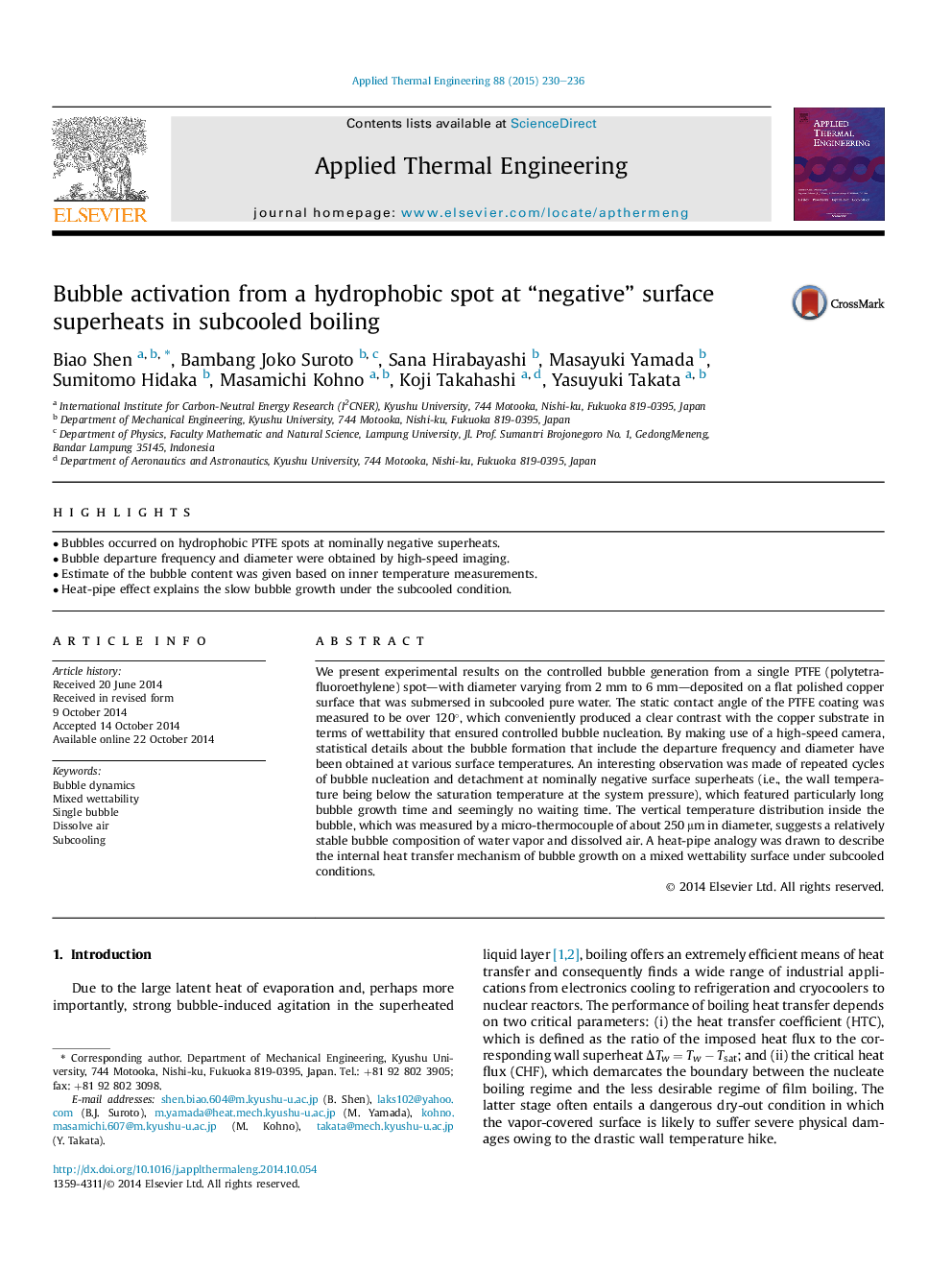| Article ID | Journal | Published Year | Pages | File Type |
|---|---|---|---|---|
| 645306 | Applied Thermal Engineering | 2015 | 7 Pages |
•Bubbles occurred on hydrophobic PTFE spots at nominally negative superheats.•Bubble departure frequency and diameter were obtained by high-speed imaging.•Estimate of the bubble content was given based on inner temperature measurements.•Heat-pipe effect explains the slow bubble growth under the subcooled condition.
We present experimental results on the controlled bubble generation from a single PTFE (polytetrafluoroethylene) spot—with diameter varying from 2 mm to 6 mm—deposited on a flat polished copper surface that was submersed in subcooled pure water. The static contact angle of the PTFE coating was measured to be over 120°, which conveniently produced a clear contrast with the copper substrate in terms of wettability that ensured controlled bubble nucleation. By making use of a high-speed camera, statistical details about the bubble formation that include the departure frequency and diameter have been obtained at various surface temperatures. An interesting observation was made of repeated cycles of bubble nucleation and detachment at nominally negative surface superheats (i.e., the wall temperature being below the saturation temperature at the system pressure), which featured particularly long bubble growth time and seemingly no waiting time. The vertical temperature distribution inside the bubble, which was measured by a micro-thermocouple of about 250 μm in diameter, suggests a relatively stable bubble composition of water vapor and dissolved air. A heat-pipe analogy was drawn to describe the internal heat transfer mechanism of bubble growth on a mixed wettability surface under subcooled conditions.
